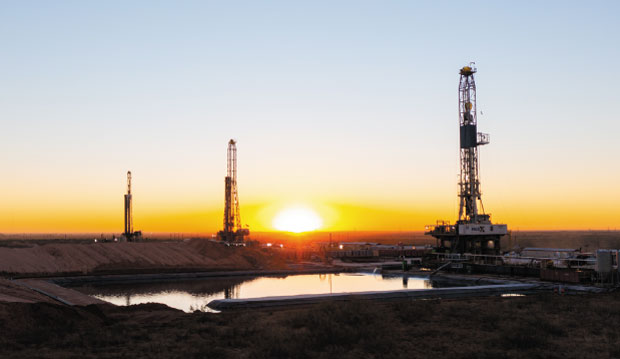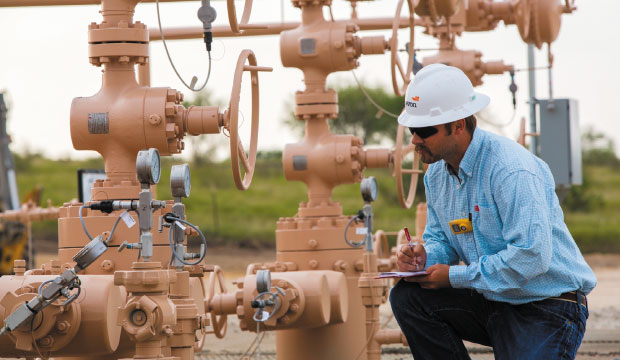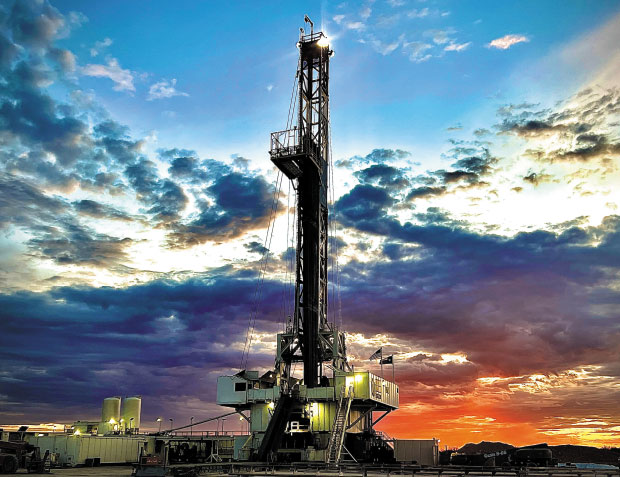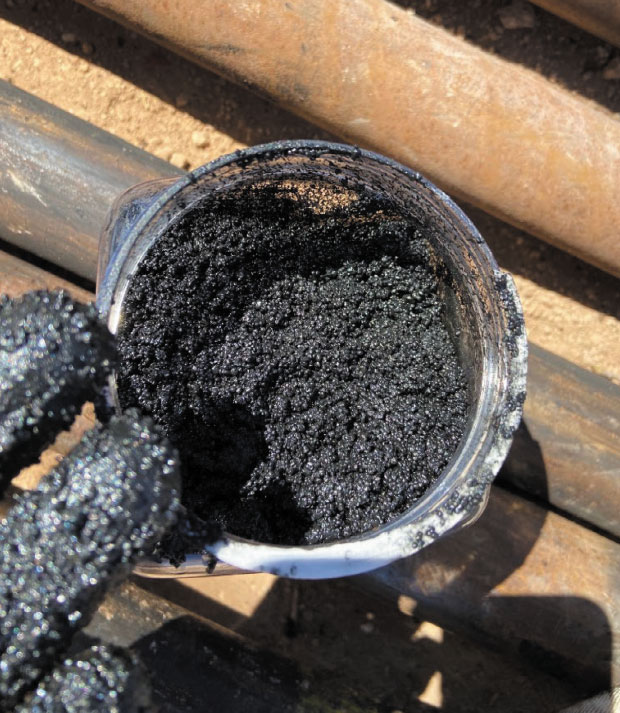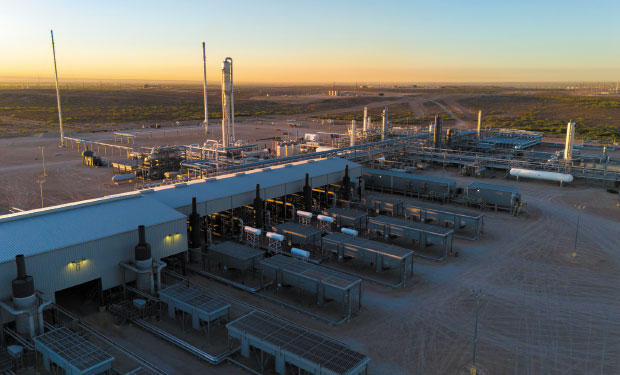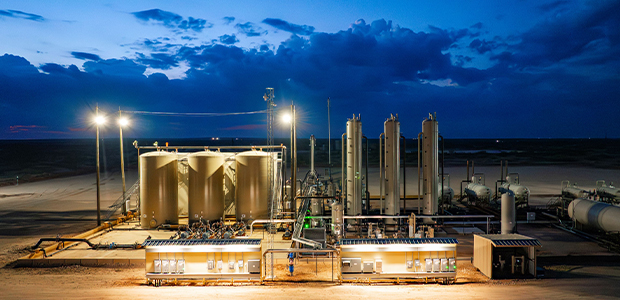
Partnerships Between Upstream, Midstream Players Hike Performance
By Danny Boyd
No basin has been better to oil and gas operators over the past decade than the Permian. But with the West Texas Intermediate benchmark staying in the $60 range thus far this year, producing regions everywhere are feeling the pressure of lower wellhead prices—including West Texas and Southeast New Mexico tight oil plays. However, Permian-based companies have the benefit of a very long perspective. The region has seen cycles come and go many times, and through it all, the basin has always managed to come out stronger and better positioned for the future.
A big reason for that reflects the old wisdom that necessity is the mother of invention. Over the years, the Permian has repeatedly met adversity head on with innovation and grit. True to form, producers of all sizes are embracing innovative technologies and creative strategic thinking to optimize operations and achieve cost efficiencies as they assess emerging plays in both the Midland and Delaware subbasins, develop oil-weighted benches with associated gas on the Central Basin Platform, and reinvigorate legacy wells being spun off by large players focused on core assets.
As companies such as Diamondback Energy, Devon Energy, Elevation Resources, and BCP Resources focus on their upstream portfolios, midstream players like Energy Transfer and Howard Energy Partners are adding new natural gas processing and pipeline infrastructure capacity to improve access to liquified natural gas terminals, power generators, and industrial markets.
Enviable Inventory
Diamondback Energy has doubled in size over the past two years following the acquisition of Endeavor Energy and Double Eagle IV. Counting assets in both the Delaware Basin and Central Basin Platform, Diamondback’s footprint now encompasses 859,000 acres, with oil production approaching 500,000 barrels daily, liquids volumes exceeding 200,000 bbl/d, and natural gas production topping 1 billion cubic feet a day.
While it seeks to be the “consolidator of choice” and keep an eye open for new acquisition opportunities, Chief Operating Officer Danny Wesson admits it will be challenging to find high-upside assets on par with its 743,000 Midland Basin acres with 8,400 identified drilling locations.
Coming off acquisitions of first Endeavor Energy and then Double Eagle IV, Diamondback Energy ranks as the largest pure-play Permian company with an 859,000-acre leasehold and daily production averaging 500,000 barrels of oil, 200,000 barrels of NGLs, and 1 billion cubic feet of natural gas a day. The company’s core 743,000-acre position in the Midland Basin includes 8,400 identified drilling locations targeting multiple benches, including the Joe Mill, Lower Spraberry, Wolfcamp A and B, and the Dean, and the potential to add the Barnett and Wolfcamp D to the list.
“While there are certainly actionable deals that will probably come forward in the coming months and quarters, we just do not see the optics of the deals that are going to compete with what we already have in inventory today,” Wesson says.
Founded in 2007 with 4,174 acres, Diamondback is now the largest pure-play Permian company. It continues to mostly drill the tried-and-true Joe Mill, Lower Spraberry and Wolfcamp A and B benches in the Midland Basin. It boosted Spraberry development after a strong Martin County well last year, and through learnings from Endeavor, is incorporating the Dean as an additional zone in some Wolfcamp A and Lower Spraberry wells. In the years ahead, more Barnett Shale drilling is expected to be incorporated with Wolfcamp D development.
The Barnett’s low gas-to-oil ratios in the Midland Basin have been a pleasant surprise, Wesson reveals. Although Barnett development does not compete effectively yet with projects in proven upper zones, the future is bright for tapping into what could be mostly black oil in the Permian’s eastern province.
Including some Delaware Basin wells, Diamondback plans to drill 425-450 gross wells this year as it works to consistently improve drilling and completion efficiencies. Average drilling times per well at mid-year had been cut to fewer than nine days from spud to total depth, and the company drilled one 10,000-foot lateral in only four days.
With simulfracs now accounting for 95% of completions, each stimulation crew is completing an average of 4,000 feet a day compared to 2,000 feet not long ago. “We have some things in our back pocket to get us up to 5,000-plus feet of lateral completed a day, and we are going to continue to chase these efficiencies,” Wesson insists.
Diamondback enjoys competitive advantages that include ~42% ownership of Viper Energy Inc. and its royalty interests in over 30,000 wells, providing the flexibility to peer over the fence at nearby drilling and completion results.
Increasing natural gas pipeline takeaway will support improved returns over time and reinforce Diamondback’s hedging and long-term supply contracts as additional capacity helps bring prices at the Waha hub in line with Henry Hub and other market indexes.
“If gas prices were to improve and maintain cyclical upward movement to the mid-cycle gas price, there is a lot of gas in the Permian that could be developed,” Wesson says.
AI-Guided Strategy
Devon Energy is nearing 1 Bcf/d of gas production in the Delaware Basin as it looks to artificial intelligence to optimize operations, boost recoveries, and drive permanent savings to the bottom line, reports Chief Executive Officer Clay Gaspar.
More gas sales options and drilling and completion innovations are already supporting development across 400,000 acres. In addition to growing gas production, the position is yielding more than 220,000 bbl/d of oil and more than 130,000 bbl/d of NGLs.
New gas contracts include a 10-year commitment to ship 50 MMcf/d to an LNG exporter on the Gulf Coast and a seven-year deal to ship 65 MMcf/d to CVP Basin Ranch Energy Center’s proposed 1,350-megawatt power plant in Ward County, Tx.
Devon Energy produces nearly 1 Bcf/d of gas a day, 220,000 bbl/d of oil, and 130,000 bbl/d of NGLs from its 400,000-acre leasehold in the Delaware Basin. The company is leveraging advanced proprietary artificial intelligence tools to optimize operations, boost recoveries, and lower well costs. Real-time assistance from AI and simulfrac design improvements have driven down drilling costs by 12% and completions costs by 15% over the past year alone.
Devon divested its Matterhorn pipeline interest earlier in the year, but has acquired the remaining non-controlling interest in Cotton Draw Midstream to support future gas growth, Gaspar notes.
“We are all just cherishing this amazing portfolio that we have, and each time we are able to moderate the activity, flatten the base decline, lower the amount of maintenance capital that is required, that extends that runway even further,” he comments.
Chief Technology Officer Trey Lowe says real-time assistance from AI, coupled with design improvements and simulfracs, have driven down drilling costs by 12% and completions costs by 15% since last year.
Deployment of proprietary InnDrill and InnFrac internal platforms are driving supporting swift decision making, he explains.
“Those implementations and advancements are helping drive the record drilling pace we have today,” Lowe remarks. “We think we have the fastest rig fleet in the Delaware basin.”
Similar savings are being recognized from deploying InnFrac across simulfrac operations. A related, internally developed tool is sequencing all operations on simulfracs. The goal is to expand deployment from 70% to a full 100%.
Another pilot program is being expanded in which an AI-based algorithm is enabling Devon to lower decline curves by optimizing gas lift from a central facility for multiple wells.
“When we have a distributed gas lift across the field on dozens of wells, we think we can run in near real time based on streaming data using the optimization algorithm to produce more oil because we are putting gas all in the right wells,” Lowe details.
The company is working on analysis using AI to optimize preventative maintenance and improve troubleshooting by identifying prevalent contributors to field system failures. In the Eagle Ford, AI is helping identify faulted areas to avoid and better predict well performance in those areas.
Barnett Focused
Focusing exclusively on the Barnett across a 23,000 net-acre position on the platform in Andrews County, Elevation Resources was drilling its 75th horizontal well this fall in the self-sourced bench after launching its Barnett work nine years ago, says Chief Executive Officer Steve Pruett.
The latest well is a two-mile lateral following successful completions of two other two-mile wells this year. Completion work was underway on another two-miler and on a 10,000-foot U-shaped lateral drilled to exploit a lease more fully with space restrictions.
Elevation Resources is drilling its 75th horizontal Barnett well this fall on its 23,000 net-acre position in Andrews County on the Central Basin Platform. Focusing exclusively on the Barnett for the past nine years, the company’s 75th well is a two-mile lateral and follows successful completions of two other two-mile wells earlier this year. Completion work was underway in September on another two-miler and on a 10,000-foot U-shaped lateral drilled to exploit a lease more fully with space restrictions.
Initially, the Midland company targeted the structurally constrained Devonian carbonate, but grew its Barnett position through 15 deals and began drilling multiwell pads after 12 successful Barnett delineations, recalls Pruett, immediate past chairman of the Independent Petroleum Association of America.
“Basically, it is a single landing zone for us,” he says. “We do have the Woodford formation, but we believe it is not thick enough here, although we plan to conduct a vertical test.”
With average two-mile well costs of $9 million, comparable to Delaware Basin wells, the key to drilling the Barnett is to avoid mistakes boring through the mechanically unstable, clay-rich Atoka Shale and Upper Barnett zone, Pruett offers.
Average completions consist of 2,200 pounds of proppant and 50-55 barrels of fluid per foot pumped at a rate of 85-100 barrels a minute. The company has not seen big differences in recovery by altering sand mesh, whether 100-mesh or a combination of 40-70 with a 100-mesh tail-in, he reveals.
Treated play height can be as much as 250 feet in what Elevation labels a hybrid unconventional/conventional reservoir, in which the top section is a silty shale and the remainder interbedded silts and limestones with better permeability than the shale.
Some Barnett wells have made up to 80% oil initially, but GORs over time tend to rise more on platform wells trending eastward, Pruett details. A well initially producing 3,000 cubic feet of gas for each barrel of oil may in time produce 10,000 cubic feet per barrel of oil. By comparison, a well on its western acreage trending toward the Delaware Basin might start at 1,000 cubic feet per barrel and over time gravitate toward 2,000 cubic feet, he estimates.
Multiple gas pipeline projects set for completion starting late next year should relieve restrictions and provide market opportunities for Barnett operators who have faced constraints and at times been forced to flare some gas or sell it at a loss, Pruett comments.
Better gas prices ahead should transform the Barnett Shale from a Tier Two to a Tier One play, he assesses. With divestment possible over the next few years for the private equity-backed company with only a few drilling blocks left, the outlook for higher gas prices will benefit all Barnett players, Pruett concludes.
Legacy Redevelopment
With larger Permian companies divesting non-core properties, BCP Resources is acquiring and redeveloping legacy assets in the Midland Basin, Delaware Basin, and Central Basin Platform, where advanced workover and redevelopment technologies are boosting production, says owner and Chief Executive Officer Barry Portman.
Since launching oil and gas operations in 2021, BCP has grown operated production to 1,100 boe/d (70% liquids) across a lease acreage position of 15,818 acres. About 85% of operated wells are vertical, Portman explains. The Midland company has non-operated interests in horizontal wells producing 500 boe/d and plans its own horizontal and vertical drilling program next year as it marches forward with workovers, re-entries, and waterflood optimization.
BCP Resources is acquiring and redeveloping legacy assets in the Midland Basin, Delaware Basin, and Central Basin Platform, with its heaviest concentration of wells in Winkler, Reagan, Upton and Gaines counties. Some 85% of BCP-operated wells are vertical, yet the company has non-operated interests in horizontal wells and plans to launch its own horizontal program next year as it executes its strategy of well workovers, re-entries, and waterflood optimization.
Three years ago, BCP acquired southern Midland Basin assets in Reagan and Upton counties from Hibernia. The properties include 3,500 feet of scattered pay throughout the Wolfberry, ranging from the Spraberry down to the Devonian.
The following year, the company bought properties farther north in Winkler and Gaines counties, divested from a corporate merger that formed Chord Energy. Production is chiefly from the Wichita Albany, Clearfork, and Wolfcamp with plenty of other options in additional pay zones, Portman notes.
The company faces stiff competition from larger acquirers looking to grab sizeable chunks of bundled assets being sold off by bigger operators, but BCP’s extensive basin experience and familiarity with the process is helping convince divesting companies to do business with a smaller player.
“If we make an offer, we can close the deal. We focus on the old school way of doing things and work hard. We have a lot of experience in the basin, local to Midland, and we are a part of the community,” states Portman, a nearly 30 year veteran of the Permian Basin, formerly vice president of production operations and Permian general manager at Pioneer Natural Resources, who began his career in 1998 with Marathon Oil in the historic Yates Field in Iraan, Texas.
On workovers, BCP has reinvigorated some wells idled for up to 20 years. Work includes refracturing with modern technology, acidizing, and completing behind pipe pay onto production. Waterflood optimization is being done by conformance, core analysis, and log studies.
Up to six re-entries are planned next year in which the company will convert vertical wells to horizontal producers by kicking off the vertical with the help of a cement plug or whipstock. The 4.75-inch diameter lateral is then drilled and completed open hole or with casing.
“On some of these legacy wells, you might have 20 feet of vertical pay access, but if you can go horizontal on those 20 feet, you can open up 1,000-3,000 feet and tap into reserves that would take much longer to produce vertically,” Portman observes.
Horizontals planned for the Central Basin Platform next year are expected to include one to 1.5-mile laterals. All the vertical refracturing work will include modern frac designs with more proppant and fluids, a sharp contrast to some vertical fracs on legacy wells in the 1960s that included the use of glass beads for proppant.
Expanded Gas Takeaway
With producers focusing on innovations to boost production, multiple gas pipeline projects are expected to eventually improve gas marketing options. In recent years, at least 11 new pipelines or expansion projects have been completed, are now under construction, or are planned pending final investment decisions.
That list includes multiple projects from Energy Transfer LP, according to Tom Long and Mackie McCrea, the company’s co-chief executive officers. Energy Transfer, which moves about 30% of all U.S. gas production, announced in August that it was green lighting the Desert Southwest Pipeline, part of the company’s Transwestern system.
Energy Transfer LP has multiple planned natural gas pipeline and processing projects on the calendar, including the Desert Southwest Pipeline, a 42-inch, 1.5 Bcf/d system announced in August that will run 516 miles from the Waha Hub to Phoenix, Az., as an expansion of its Transwestern Pipeline. Initial capacity of 1.5 Bcf/d is sold out on the 42-inch, bi-directional Hugh Brinson pipeline connecting Waha to Maypearl just south of Dallas. Energy Transfer is also adding Permian gas processing capacity after achieving record processing volumes of almost 5 Bcf/d this year.
The 516-mile, 42-inch line includes nine compressor stations and will carry at least 1.5 Bcf/d of Permian gas from Winkler County, Tx., to Phoenix, Az., benefiting utilities, energy providers, data centers and other clients along the route, Long says. Line diameter could be increased to 48 inches, doubling capacity. Startup is anticipated in the fourth quarter of 2029.
“This strategic expansion of our Transwestern Pipeline system will enhance system reliability and provide new and existing natural gas to markets in southern New Mexico, Arizona, and across the southwest region with access to low-cost, reliable Permian Basin volumes,” Long comments.
Capacity of up to 1.5 Bcf/d is sold out on the 42-inch, bi-directional Hugh Brinson pipeline connecting Waha and the Midland Basin to Maypearl just south of Dallas, where it connects to other Energy Transfer pipes and infrastructure. Phase 1 includes construction of a 42-mile, 36-inch lateral to connect the line to third-party processing plants in Martin and Midland counties. Phase 2 will add compression to take line capacity to 2.2 Bcf/d.
The company can also accommodate more Permian gas through a planned expansion of its Bethel natural gas storage facility in Anderson County, about halfway between Dallas and Houston, and more operators in West Texas and Southeast New Mexico are signing up for long-term transportation out of the Permian when capacity opens up on Energy Transfer’s Oasis Pipeline system, McCrea points out.
In the meantime, Energy Transfer is adding Permian gas processing capacity after achieving record processing volumes this year of almost 5 Bcf/d.
More than 800 MMcf/d of capacity has been added recently, including expansion of existing plants, the addition of the new 200 MMcf/d Lenora II cryogenic plant in the Midland Basin, and the formerly idle 200 MMcf/d Badger plant relocated to the Delaware Basin. The 275 MMcf/d Mustang Draw plant is scheduled to begin operations in the Midland Basin by the second quarter of 2026.
In addition to completed NGL pipeline and terminal expansions elsewhere and planned fractionation additions, the company has optimized deliveries on its Gateway NGL Pipeline from the Delaware Basin to Mont Belvieu. By the first half of 2027, a Delaware Basin NGL Pipe Looping project is expected to source an additional 150,000 bbl/d of NGLs from the northern Delaware Basin.
Planned Processing Plant
With Delaware Basin gas output expected to grow amid takeaway expansion and a projected U.S. demand surge of 30% over the next five years, Howard Energy Partners seeks to add a fourth processing plant in the Reeves-Loving County line area, says Chief Operations Officer Brandon Burch.
The San Antonio-headquartered company, which operates in the Permian as part of a joint venture with Devon, already has three plants in the area to process 620 MMcf/d from various producers. The company has recently purchased its 4th 200 MMCFD plant and has plans to move forward with the installation in 2026.
Howard Energy Partners, which operates in the Permian as part of a joint venture with Devon Energy, anticipates a final investment decision early next year on a new 200 MMcf/d processing plant in the Reeves-Loving County line area. Upon approval, the new plant is projected to be in service within a year, giving Howard Energy Partners four processing plants in the Delaware Basin.
In the Delaware Basin, the private midstream player operates more than 100 miles of gas gathering lines feeding the processing complex and 100 miles of crude gathering lines connected to a 50,000-barrel crude oil terminal with both truck and pipeline capabilities.
“We remain genuinely excited to operate in this geographic area,” remarks Burch. “We have a great partner in Devon Energy, and the expertise and capacity to continue to grow.” In addition to the Delaware, Howard Energy has assets in the SCOOP/STACK, Marcellus and Eagle Ford, including Gulf Coast terminal and logistics facilities at Corpus Christi and Port Arthur, and a 200-mile cross-border Nueva Era Pipeline delivering South Texas gas to a growing industrial sector in northern Mexico.
Chairman and Chief Executive Officer Mike Howard launched the company in 2011. Howard Energy entered the Delaware Basin in 2017, initially building out its system to support Devon’s needs. Mergers and acquisitions continue to contribute to the company’s growth across multiple basins, though in the Delaware, expansion has been driven exclusively through greenfield development. In 2023, Howard Energy executed on over $800 million in greenfield projects at Port Arthur, the Permian and Eagle Ford. In 2024, the company signed $1.1billion in M&A transactions.
“This year, we have seen a balanced mix of both approaches,” Burch notes. “We have built an organization that performs exceptionally well on all fronts. More greenfield expansion opportunities are possible, even with the extraordinary pace of the Delaware Basin buildout in oil/gas/water assets and power infrastructure,” he says.
“Greenfield projects are where we really thrive,” Burch comments. “We handle every phase, from initial concept to full execution. Our team can define the scope, develop cost estimates, and, once a commercial opportunity is viable, oversee the project throughout its entire lifecycle.”
Microgrids and short-term gas power generation remain essential in supporting the company’s energy demands. As new operations come online, proactive planning has become increasingly critical to ensure reliable and sufficient power availability. A decade ago, operators could secure power hook ups in six to 12 months. Today, it can take up to a year just to reach the detailed engineering phase.
“For our West Texas assets, we have been fortunate to establish power connections relatively quickly and have been able to expand incrementally from there,” Burch concludes.
For other great articles about exploration, drilling, completions and production, subscribe to The American Oil & Gas Reporter and bookmark www.aogr.com.







